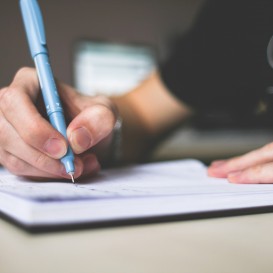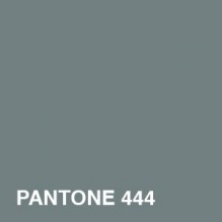Your checklist for perfect print
12th July, 2017

Person writing their printing checklist
Increasingly we find that when it comes to printing, there is no one type of client. There are endless different professions and job roles that require print buying in some capacity. Whether you work in marketing, B2B or retail, event planning, hospitality or leisure, there is always a print requirement to be found.
But just because many of us need to buy it, it doesn’t mean we know much about print.
We can’t all be experts from day one - it takes time to learn all the different terms and get used to the general workflow of a print project. That’s why having a trusted printing partner on the books can really help guide you through if you’re not sure what you’re doing. It has to be said however that some print partners are less caring than others. Cheap and Cheerful printing companies may not advise if a project is getting into hot water - for example, if your artwork isn’t the correct resolution, or if your substrate is completely unsuitable.
For this reason, it’s important to know exactly what you need to consider before you place a print order.
Just in case your print partner takes their eye off the ball, here’s our essential printing checklist for a tip-top print job:
Artwork ✔
Usually, artwork for print should be supplied as a high-resolution PDF with bleed and crop marks. If you check with your supplier in plenty of time you can ensure that your artwork is created to the correct specification first time and mitigate the risk of delays.
Quantity, size and orientation ✔
It seems obvious, but it’s crucial to check these three factors are correct!
Tip: Sometimes it’s worth asking for a price for a higher quantity, as set-up fees can mean that it’s often really cheap to get a few hundred extra added to the order.
Digital or litho? ✔
Short runs and large format printing are almost always digitally printed. This means you can use multiple designs and include variable data at no extra cost. Longer runs are usually litho printed. Litho printing adds a cost per colour and usually requires uniform artwork across the whole order. The quality is great and the price improves as the quantity increases.
Paper stock ✔
Our advice for picking the perfect paper stock is to ask your supplier for a sample pack. Alternatively, GF Smith has a beautiful sample pack that can be ordered free of charge. Most printers stock GF Smith papers, or can offer a similar alternative.
Finishing ✔
It’s best to not assume the supplier knows how you want your order finished, so give as much detail as possible. Does it need a laminate? If folding is involved you might be best off adding a laminate to ensure the paper doesn’t crack. A laminate can also protect against smudges and damage. Matt or gloss are standard - but there’s a whole host of other kinds available including eco-friendly ones.
Binding ✔
If your order takes the form of a book or brochure, you’ll need to specify how you want it bound. Saddle stitched is what we call stapled which is common and low cost. PUR or perfect binding will give you a book with a spine. Wiro binding is good for prospectuses and official documents.
Extras ✔
If the budget allows, there are lots of extra touches that can really set a print project apart. Gold and silver foiling can add luxury detail to text and logos. Spot UV varnish is used to highlight areas of a page with a shiny finish. This is great for picking out images.
Proof ✔
Usually, a printing company will offer the option of either a digital proof or a PDF proof, which is complimentary as part of the project. The digital proof will be run out to size but won’t usually be on the correct stock. The purpose of this is to ensure that the design works at full size and the pagination is correct. A PDF proof is a measure to ensure that the correct version of the design has been submitted and that all the design components have saved correctly. Check your proof with the help of an extra pair of eyes, because once it’s signed off there’s no going back and failure to check could be a costly mistake!
Leadtime ✔
3-5 days is about an average lead time for a medium-sized print run, but the time can vary from job to job. It’s absolutely crucial to communicate deadlines early on and if the delivery date is final, it’s a really good idea to keep reminding your print supplier when the due date is just in case!



Check through these points every time and your print projects will be an easy success. It can be a lot to think about - but mark my words it’ll be worth it.
The great thing about using a managing agent to coordinate your printing is that they look after all these details on your behalf. It’s their job to source the best price and the best quality, as well as take care of all the small tasks. Not only that, but with a design agency at the helm you can be sure that a creative eye will be on the job at all times.
To chat to us about how we can manage your print requirements, visit nexusdp.co.uk/services/printing or contact us on 01273 702525







Comments
comments powered by Disqus